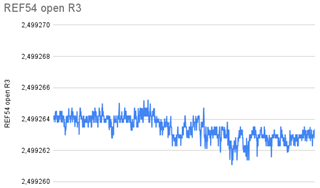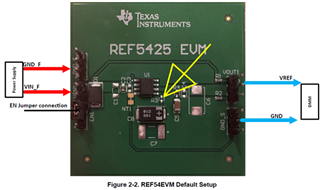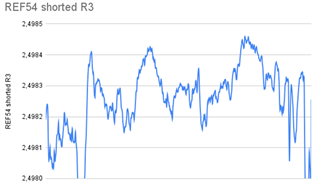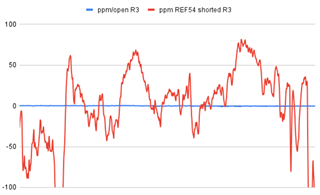Tool/software:
Team,
Can you please help with the below issue seen by customer:
I would like to check the data sheet specification (0.11 ppm_pk-pk) because we could use this low 1/f noise in our project.
-When I measure the output voltage in the default state, it looks very good so far.
The output voltage is fairly low-noise:
-However, if I now replace the resistor R3, which is not fitted by default, with a shorted connection, then the noise reduction capacitor C8 is connected.
This should reduce the noise of the output voltage even further.
I waited a very long time (about ½ hour) to be sure that C8 had charged and reached a steady state.
The measurement was carried out in a quiet environment (no particular temperature fluctuations, no sunlight, no fans nearby; the environment was exactly the same as before).
Unfortunately, the voltage fluctuations have not become smaller, but much larger, about a hundred times higher!
Actually, C8 should not increase the 1/f noise (flicker noise), but reduce it significantly: according to the data sheet by a factor of about 4!
Could it be that a wrong or defective capacitor C8 has been installed here?
Incidentally, both diagrams show 2500 samples @ 6.1 sps.
When I look at the REF54EVM BOM list printed in https://www.ti.com/lit/pdf/snau289 , for the Panasonic Cap I find a leakage current specification of 160 µA (see data sheet from https://industrial.panasonic.com/cdbs/www-data/pdf/AAA8000/AAA8000C83.pdf ).
That would be a very high value and could explain the problem.
Can you tell me if this is possible?
Should I solder in another capacitor instead of the 16TDC100MYF and if so, which one?


The plot diagram shows both measurement curves in the same diagram (as a deviation from the mean value in ppm) so that the difference in flicker noise is even more clearly visible:

Thanks in advance
Anber

